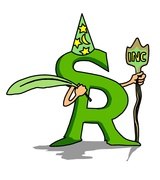Recent Comments
Archives
Categories
- No categories
Meta
Area History
Bear Mountain History
The story goes that local resident, Adam Hoy shot a bear from one side of the river to the other. So he kept referring to it as Bear Mountain. Hence the name, The Village of Bear Mountain.
Bear Mountain Home Association Cable Company was built in 1972 by four residents. In 2002, it was taken down and sold for scrap. It ran from the railroad bridge crossing the river to the ice-mine cut. Originally, the company had 12 channels, but later increased the count to 38. The costs per customer for the service was $5.00 for a time, and eventually increased to $8.00. Rick Hoy served as the maintenance guy and his wife, Peggy, acted as the company’s secretary and treasurer. The company served 20 hook-ups during its time.
Hoy recalls the toughest hook-up for him was for Adam Stiver, because the cable had to cross the road. However, Stiver clearly appreciated the service. When he noticed nearby communities getting their own names, Stiver suggested “Bear Mountain” in honor of the cable company. The community had a sign made to display “Village of Bear Mountain”. The name change has never been made official by the government, but the community still considers itself Bear Mountain.
Another story that has been told, involves Chris Dwyer, Bald Eagle Township Supervisor. At a township meeting, a verbal fight started between Adam Stiver and another resident over the naming of the community. The other resident threatened Chris Dwyer, so Chris being the man he was, had the signs made up and placed them where they are today.
Lock Haven History
Human inhabitance of the Lock Haven area can be traced back to as early as 12000 BCE. Eventually, an Iroquois tribe called the Munsee occupied the Lock Haven area and the nearby Great Island. As a part of the Treaty of Fort Stanwix, the land on which Lock Haven sits was transferred to the U.S. government in 1784. The government then sold the land to the state of Pennsylvania.
The town was laid out in 1833. Jeremiah Church, the founder of Lock Haven, and his brother, Willard chose the site because the development of the West Branch Canal on the Susquehanna promised opportunity. The name originates from the presence of a nearby canal lock. Church also described the area as a haven for loggers, boatmen, and travelers. When Clinton County was formed in 1839, Lock Haven was selected as the county seat. Lock Haven was incorporated into a borough in 1840 and then into a city in 1870.
The timber industry and the transportation industry brought prosperity to Lock Haven in the 19th century. A log boom of timber cribs weighted down by large stones was constructed in 1849. Here workers, called boom rats, would sort and brand logs as they floated down the Susquehanna into the boom.
In 1859, the Sunbury and Erie railroad (later Philadelphia and Erie Railroad) was extended to Lock Haven. Christopher and John Fallon, founders of the Fallon Hotel, among others, funded the line because they believed opportunity for significant wealth existed in the area’s resources. With the railroad came a building boom and new mode of transportation for the timber. In 1889, the third largest flood to hit Lock Haven destroyed the log boom, having a large negative effect on an already declining business. The same flood also damaged the canals, which were then abandoned. Eventually a levee was constructed (complete in 1995) to protect the city from floods.
The Central State Normal School first held its classes in 1877. Originally, the school was established to train teachers. The school would eventually, in 1960, become Lock Haven University, after being purchased by the government and broadening its emphasis beyond just teacher education. The university’s student population would grow from a couple hundred to a few thousand were it remains today.
The Piper Aircraft Corporation factory was built in Lock Haven in 1937 by William T. Piper, Sr. after one of the company’s manufacturing plants was destroyed by fire. The factory remained active until 1984, when operations where moved to Florida by its new owner. The Piper Aviation Museum Foundation was formed to preserve the history and legacy of the Piper Aircraft Corporation and its founding family. The Piper Aviation Museum is located at One Piper Way in Lock Haven. The Sentimental Journey Fly-In to Cub Haven is held in June of each year.
More history and heritage of our area can be found at the Heisey Museum or by contacting the Clinton County Historical Society at 570-748-7254 or by visiting www.ClintonCountyHistory.com.

